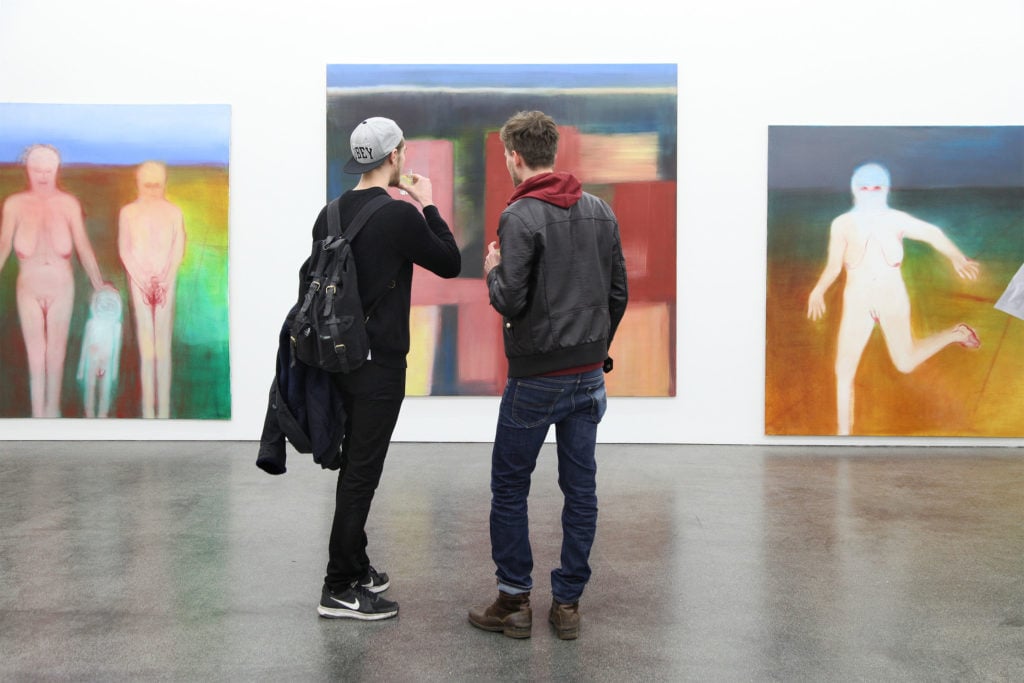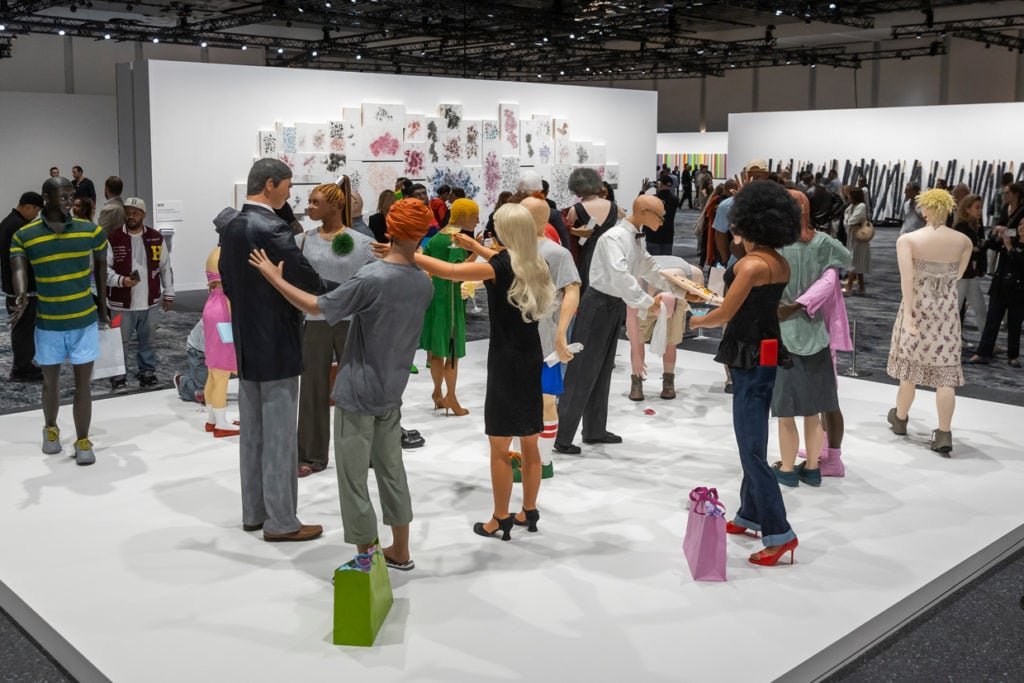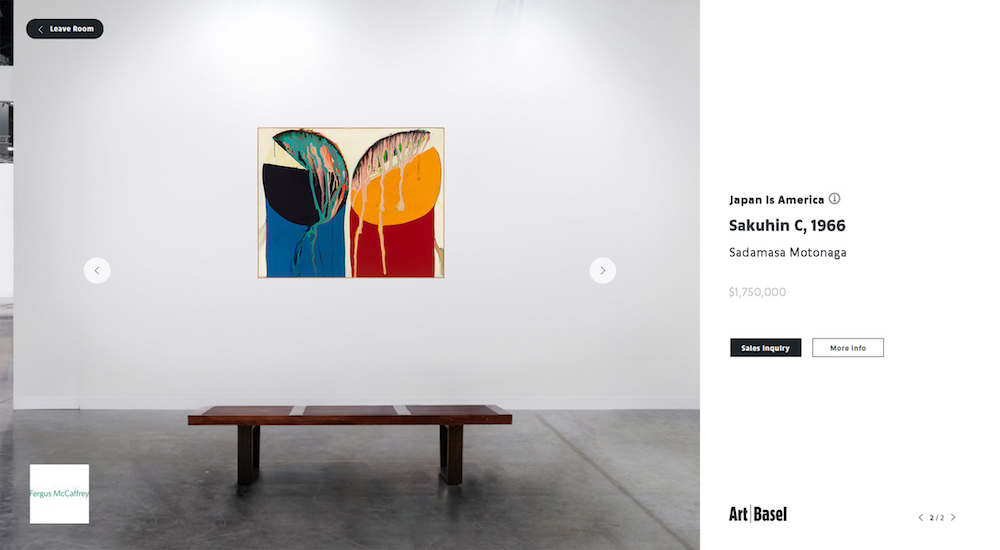Market
7 Hard-Won Lessons From Art Dealers Who Survived Past Recessions on How to Navigate a Financial Downturn
We canvassed insiders for advice about what to do in the months ahead.

We canvassed insiders for advice about what to do in the months ahead.

Kate Brown &
Eileen Kinsella

The art world is bracing itself.
For weeks now, the speedy spread of the coronavirus has exhausted health-care workers, forced people indoors, and killed more than 45,000 people around the world. It’s also having its way with the economy, with financial experts warning that the looming recession may only just be beginning.
Although the current crisis doesn’t have a perfect precedent, there have been economic headwinds in the recent past, most notably during the 2008–09 Great Recession that battered industries worldwide. We asked dealers around the world to reflect on that crisis and others to offer their advice on how to survive what may be a long and potentially painful period to come.

Crowds at Art Basel 2019. © Art Basel.
One major lesson of the Great Recession? That the art market isn’t just a cold economy.
“That moment taught me that we are not just an industry, but a community,” says New York dealer Cristin Tierney. “Deep connections are better than broad networks.”
Already in the past few weeks, those at the top of the market have extended a helping hand. David Zwirner announced this week that he will be sharing his online viewing rooms with a dozen smaller New York galleries. (Hauser & Wirth, meanwhile, will donate 10 percent of the profits from its online sales to the World Health Organization’s efforts to fight the coronavirus.)
But even dealers who are not in a position to help others should keep lines of communications open, Tierney says.
“Stay in close contact with your colleagues and fellow professionals—dealers, gallerists, advisors, auction specialists,” she says. “They are the ones who will get you through this. They understand you, they will work with you to craft deals, to creatively troubleshoot and share inventory. With longtime colleagues you can share resources in every way.”
And more than ever, now is the time to get in touch with people who have ideas unlike your own.
“One extraordinary quality that I think every good gallerist possesses is the ability to connect with diverse groups of people—artists, collectors, writers, curators, thinkers, funders—from different places in the world, and with different ideas about art,” says Candice Madey, who runs Stellar Projects in New York.

Visitors looking at works by Miriam Cahn at Meyer Riegger Gallery at Berlin Gallery Weekend 2016. Photo courtesy Berlin Gallery Weekend.
While New York dealer Joel Mesler says he has “definitely heard of a lot of cancelled invoices,” he says that real buyers are still going to buy.
Collectors of artworks at lower price points (around $30,000 or less) will still be willing to gamble “if dealers are set up properly” with good online exhibitions and well-designed viewing rooms. Mesler says he just purchased two works from an exhibition that was about to open online.
The same could prove true for even more affordable sections of the market. Around the world, emerging artists have pledged to buy works from one another during the coronavirus crisis, suggesting that online sales are ramping up at all levels of the art market.
In an economic downturn, it’s important for dealers to know exactly what their clients want, and to offer works accordingly.
“One needs to focus on offering a substantial work by an artist to a collector with a known interest,” says the German art dealer Barbara Gross.
“Right now, it is all about matching the right client to the right artwork,” Tierney adds. “In this climate, it often requires collaboration.”
Joel Mesler says that, with auctions around the world now being postponed, these sales could set the tone in a way that public sales will not be able to. “A lot of collectors use the auction market as a kind of barometer of a healthy market,” he says. Emerging sections of the market may now fill that void.
Selling from a JPEG is nothing new. But almost overnight, online viewing rooms and sound social media strategies have become essential for almost any art business. Several collectors contacted by Artnet News say they have collected works by new artists after being introduced to them on Instagram, and the emergence of the virtual edition of Art Basel Hong Kong and David Zwirner’s new online platform are indications that this is the new normal.
Other dealers are going a step further.
In Germany, dealer Johann König has been offering live Instagram studio visits with some of his most sought-after artists, including Alicja Kwade and Claudia Comte, while fielding questions from the public.
“Interactivity is really important,” he tells Artnet News. “I really believe that asking people to come into a virtual gallery space will not get you as far.”
He has even used the new platform to connect with new artists.
“I met with an interesting street artist and a South Korean artist recently,” he says. “There are so many great artists out there and in times like this, we need to open up. People buy art because they want to participate in something and they want to live it.”

A view of Tom Friedman’s installation in Art Basel Miami Beach’s Meridians sector, presented by Stephen Friedman Gallery and Luhring Augustine. Photo: Courtesy of Art Basel.
In some countries—and in Germany especially—governments have been rushing in to help dealers and artists endure the fallout.
In the US, meanwhile, certain small businesses will benefit from the government’s recently passed $2 trillion stimulus bill, which includes loans packages.
“Presuming businesses are willing to take on more debt to move forward, galleries will be able to benefit from many of the programs being rolled out by the federal and state government,” says New York dealer Rob Dimin.
But Canice Madey says it’s time for established collectors to organize a separate fund to supply smaller dealers with other low-interest loan options.
“There are so many things people can and should do,” she says. “Even modest amounts of money will go far for a small business.”
Still, consolidation—and the closing of certain galleries—is likely inevitable. “I do think a handful of galleries will decide to close or merge or come up with a new identity,” Dimin says.

Art Basel’s online viewing rooms: Fergus McCaffrey. Courtesy of the gallery.
Sure, it sounds obvious. But all too often, business owners get distracted and forget to always keep an eye on the bottom line, and to keep costs down as much as possible.
“Nobody yet knows how the current situation will further unfold,” the Berlin- and Cologne-based dealers Saskia Draxler and Christian Nagel tell Artnet News. “Take a look at your bank account to see how long you can survive. Good accountants are very helpful in difficult times.”
The dealers, who have run their gallery Nagel Draxler for more than 30 years, say that advice helped them through financial crises in 1987, 2001, and 2008. They say they are aiming to endure the current crisis without reducing staff.
One way to keep down costs? Sharing space.
Candice Madey says her rent is relatively low due to a rent-sharing program with the architect Buro Koray Duman and the Metropolis Ensemble orchestra.
“It’s a very different scenario than if we were all galleries,” Madey says. “Our needs and usages are different.”
The Great Recession that swept over the world economy a decade ago impacted nearly every industry. But the blueprint to solving that crisis doesn’t help us in every way today.
“I think the immediate shock of everything halting at once is a fundamental difference from 2008,” says Rob Dimin. “The crash in 2008 was a breakdown of the financial system, and this is not that.”
And remember: it could always be worse. A representative from the Tokyo-based Misako + Rosen gallery, which was founded in 2006, says the gallery survived not only the Great Recession, but also the 2011 Tōhoku earthquake and tsunami.
“We are able to deal in times of crisis.”